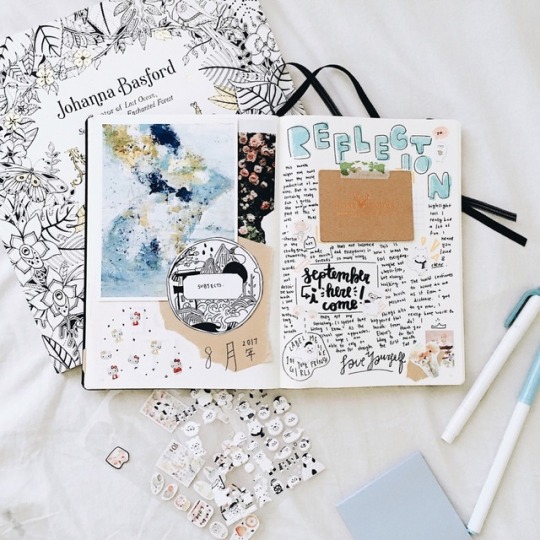kara's studyblr/code blog. i follow back from karanasaa!
Don't wanna be here? Send us removal request.
Photo
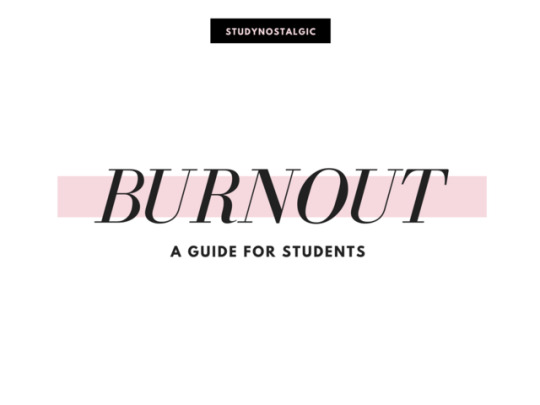
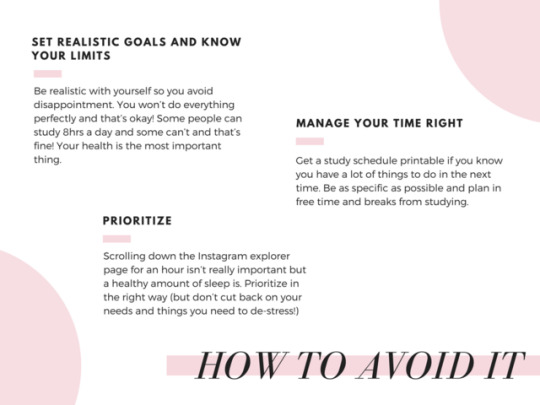
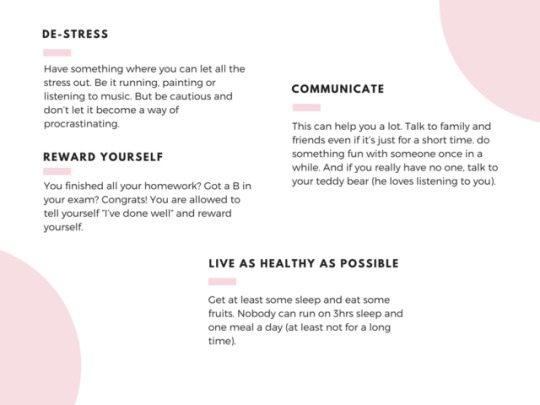
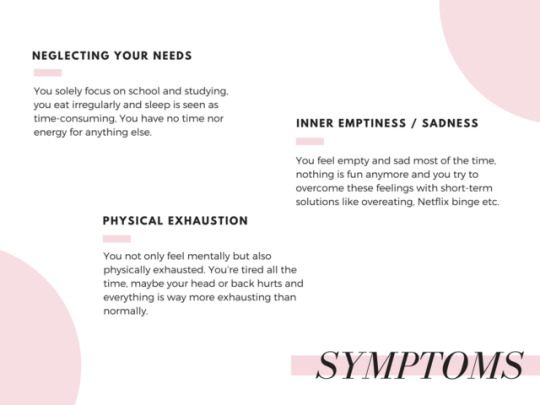
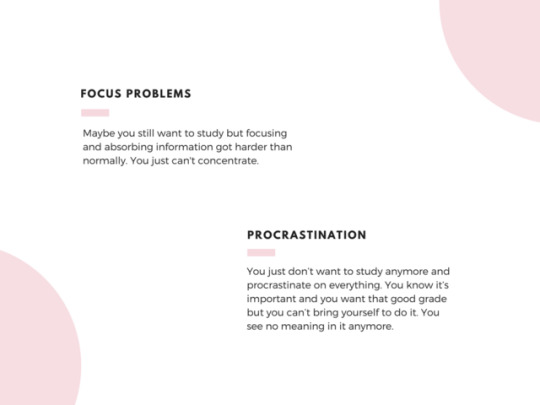
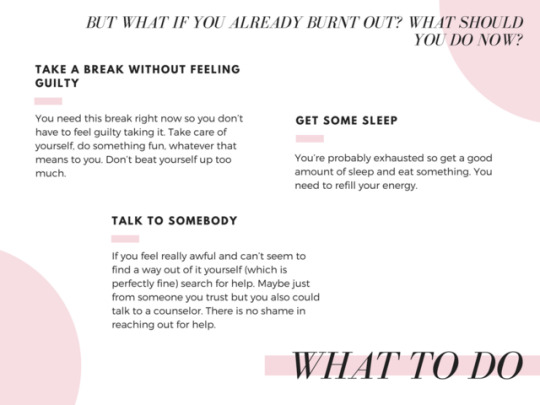

made with canva
Links: burnout measure weekly study schedule printable
Sources: Student Burnout Dealing with Study Burnout
5K notes
·
View notes
Text
like any community, I know the studyblr community and mindset can be super flawed. but I just want you to know that the intention of this community is not to put an even heavier pressure on perfection than you already get as a student anyway. you don’t have to be a perfect student to be a part of this community- you don’t even have to be a good student. lots of us aren’t, anyways- that’s why we’re here. you don’t have to know how to take and edit pictures and you don’t have to buy fancy supplies (unless of course, you want to). all you have to do is want to get better at what you do. seek some motivation. learn how to stick to a productive routine. improve your mental/physical health. take care of yourself a little better. forgive yourself. be a better you for you, and no one else but you. I hope that if anything, that’s what you hope to get out of this community. because success that’s defined as perfection is overrated.
1K notes
·
View notes
Photo
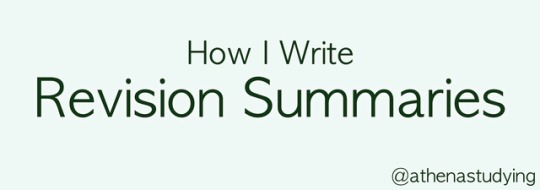
23 June 2017 ||
Hi!
Over the last few semesters, I developed my own system of revising for exams. I’m a visual learner and writing things down in an organised way helps me loads. I posted pictures of my exam notes several times before (here, here, here, here) and I use this format for basically every class that requires an exam instead of an essay - so far: calculus 1, real analysis, maths education, english literature, and teaching german as a second language. Many people really liked this format, so here’s a step-by-step guide on how I do it!
1. Supplies
I use:
blank A4 paper
one sheet of A4 grid paper
a black gel pen by Kyocera (you can use any pen, but it should have a somewhat fine tip and should dry easily)
Stabilo fine liners point88 (one or two matching colours per class)
a set square (imo that works better than a ruler)
a Faber-Castell 0.7 Grip 1347 pencil in 2B (you can use any pencil you like, but it should be HB or 2B because you need to erase it later)
lecture notes/slides, class notes, homework, basically any info that is necessary for the exam
2. Setup
Place the grid paper underneath the blank one. Make sure it doesn’t move when you write (if necessary, use paperclips to hold it in place).
Draw margins and aid lines (in pencil - you’ll erase these later). Measure them out so they’ll be the same on every sheet. I usually do approximately 1cm margins left, right, and bottom, 2.5cm margin at the top for title and subheading, and three columns: left one with a width of 6cm, middle one with 5cm, right one with 6cm and 0.5cm blank space between them. (The grid paper underneath will help.) You can also only make two columns - four columns is gonna be very hard though because that won’t leave you with much space.
Every time you have a list, bullet points, step-by-step guides etc, indent the bullets by another 0.5cm (draw another aid line for this). If you have sub-bullets, indent them another 0.5cm and so on.
I use colours for bullet points (the actual points /arrows /numbers/ whatever), important names, something that I’m defining, subheadings, and important dates.
3. Content
Start writing your notes. Make them as condensed as you possibly can without leaving important points out. I try to go for one A4 page per lecture (aka around 28 powerpoint slides or more on one page), but sometimes I’ll also end up with two.
Use abbreviations for words you use a lot, e.g. “+” for “and”, “p.” for “problem”, “str.” for “strategies”, “lit.” for “literature” etc.
You can absolutely include important diagrams/graphs etc. Either print them out in the size you need or draw them by hand and in the colours you need. If it doesn’t fit in one column, spread it out over two columns and continue the separated columns underneath/above.
Make your bullet points mean something. Use numbers, arrows, flags, lowercase letters, uppercase letters, dots - each can have a different meaning. Are you writing something where the order is important (numbers)? Are you giving examples (dots)? Are you mentioning separate important key points (flags)?
I wrote my last summary page for maths education today and stopped the time - I needed 50 minutes for one lecture with 27 slides (new material because I hadn’t been there), including a small chocolate break.
4. Final Touches
Check if the ink has dried. Check again.
Carefully erase the pencil aid lines with a good eraser. make sure you don’t wrinkle the paper (unless you don’t care about that sort of stuff haha)
If you want to, you can highlight key words (or whatever you like).
Number your pages if you’ll write several. I always write down the number of the lecture (session 1, session 2 etc) in the subheading.
Optional, but I do it: Make a copy of your sheet that you carry around with you. Nothing is as frustrating as spilling coffee over your revision sheets. Put the original in a plastic sleeve and keep it in a folder or binder somewhere, and study/revise only with the copy. Especially useful if you have others quizzing you with your summaries and they don’t care if they rip/wrinkle/ruin them lmao
I hope this was somewhat informative! You can tweak it of course, depending on what class you have and what will be on the exam. I hope you’re having a nice weekend! :)
1K notes
·
View notes
Text
gentle reminder
you aren’t your grades - your mental, physical, and emotional health are more important than school; please try your best to remember to take a break if you need to
3K notes
·
View notes
Text
gentle reminder for when you feel demotivated
there’s nothing wrong with feeling demotivated, so please don’t punish yourself for that – everyone, even the most successful people in the world, can fall into a slump
you can do it
i believe in you
it’s not going to be as bad as you think
don’t place too high expectations on yourself, especially when you’re feeling low
set small and specific goals – little steps are always important
print out or write down what you need to do and put that note where you know you’re going to see it
set yourself a specific time for when you’re going to start working on something, but don’t put too much pressure on yourself if you’re unable to
see what others are doing and achieving, and use that as motivation instead of comparing yourself to them and putting yourself down
call for help from others to cheer you on when you can’t do it on your own
counter your negative thoughts with positive ones
think about the benefits of doing the task, instead of the difficulties it will take to get there
take deep breaths and take a step back when things become too overwhelming or the stress takes over (here’s a written breathing exercise, or a gif you can breathe along with)
take breaks, don’t overload yourself
if you think that your schedule is becoming more and more of the same thing every single day, that can heavily impact your motivation - so try your best to try something new, or even just do something that you would usually do in a different way, or with a different outlook; it doesn’t matter if the change you make is big or small, because every attempt goes towards progress
when you’ve completed what you needed to, or even just worked at it a little bit, make sure to congratulate yourself, because you’re trying and i’m so proud of you for that
try your best, because your best is good enough
you got this
19K notes
·
View notes
Photo

I write so many essays these days that I’ve developed a proofreading routine by now - I thought I’d share it in case it helps anyone out! You don’t have to do all of this of course, and this isn’t in any specific order, but some of this might help you improve your essay before handing it in. :)
1. Read it backwards
It’s easy to skip to the end of the sentence when you already know what it says. That’s why you should read your essay backwards - especially for spelling! It makes you focus on each word and you’re less prone to skipping ahead.
2. Professor mode
You can’t do this if you finish your essay two hours before the deadline, but otherwise: Let your essay sit in peace for two or three days, then print it out (!), get a red marker, and get into teacher mode. Proofread your essay like it’s your friend’s - what sounds incoherent? Which structure is off? What isn’t made clear? Where do you need citations? Really go to town and be strict with yourself, then edit.
3. Selective proofreading
Don’t try to proofread spelling, grammar, and content all at once. Read your essay several times, each time focusing on a different thing. This goes especially for correcting citations and references as well as punctuation.
4. Defend it
Give your essay to a friend or family member and then ask them if they’re convinced by your thesis statement. Ask them to grill you with questions. If you can’t defend your essay, it’s probably not convincing enough - and if you have to defend it a lot, maybe include some of the points you use in defence of it in your actual essay.
5. Resources
hemingway - proofreading tool that measures readability and makes improvement suggestions
Purdue OWL - for referencing and style guides
how to use endnote (university of bath)
grammarly - grammar checker
English grammar, especially punctuation
thesis statements
Hope this helped! :) If you have any more tips, feel free to add them.
769 notes
·
View notes
Text
How to read unnecessarily long papers by stuffy academics
As a cognitive neuroscience major, I read a lot of lengthy academic papers. If there’s one thing I’ve learned from having done so many damn readings, it’s that you don’t actually need to read every single word in the paper to understand it. A lot of times, the author will repeat themselves over and over, or offer evidence/explanations that aren’t essential to understanding their argument. Instead, I recommend using the first/last method, which is essentially a guideline to what you should read in order to understand the main gist of an academic paper.
Any academic paper consists of three structural units: the paper as a whole, the sections/subsections that make up the paper, and the paragraphs that make up each section. The paper as a whole typically follows a certain form: intro/abstract, main argument separated into sections, conclusion. The sections cover one facet of the main argument. The paragraphs provide specific details or explanations for the topic currently under discussion.
The first/last method is exactly what it says on the tin: you only need to read the first and last bit of every structural unit. This means you will read the following as they are presented in the paper:
abstract, intro, and conclusion
definition of terms, if provided
first and last paragraph of each middle section
first and last 1-2 sentences of each paragraph
The main argument is typically summarized in the intro/abstract, conclusion, or both. The main claim of each section is usually presented in the first paragraph, and the conclusion of the section typically expresses the implications of that claim. Finally, paragraphs will usually start with some kind of topic sentence and end with a conclusion. By reading only these things, you’ll pick up at least 70% of the meaning of the paper, and you’ll save yourself a lot of time and frustration.
If you’d like to bump that comprehension up to 95%, I recommend skimming the paper for italics, lists, and descriptions/summaries of other arguments and reading those things when you encounter them in addition to the things mentioned above. The key to this is to skim for certain cues, and not read every single word. Italics serve as a visual cue, lists are cued by indicators like “first”/”second” or “1)”/”2)”, and summaries of other arguments are typically indicated by copious citations or usage of another author’s name.
This method helped me get through a 26-page reading in a little over an hour with around 95% comprehension of the author’s argument. Hopefully it’ll help you in your studies as well.
9K notes
·
View notes
Text
100 Verbs in Korean
묻다 - To ask 물어보다 - To ask 도착하다 - To arrive 대답하다 - To answer 끓이다 - To boil 빌리다 - To borrow, lend 사다 - To buy 태어나다 - To be born 죄송하다 - To be sorry 축하하다 - To congratulate 청소하다 - To clean 울다 - To cry 오다 - To come 요리하다 - To cook 썰다 - To chop, slice 닫다 - To close 고백하다 - To confess 걸다 - To call, dial 꿈꾸다 - To dream 마시다 - To drink 운전하다 - To drive 죽다 - To die 출발하다 - To depart 춤추다 - To dance 튀기다 - To deep fry 하다 - To do 운동하다 - To exercise 먹다 - To eat 들어오다 - To enter 나가다 - To exit 끝나다 - To finish 볶다 - To fry 사랑에 빠지다 - To fall in love 싸우다 - To fight 찾다 - To find,To look for 주다 - To give 일어나다 - To get up 가다 - To go 가지다 - To have 갖다 - To have 도와주다 - To help 듣다 - To hear 서두르다 - To hurry, rush 싫어하다 - To hate, dislike 있다 -To have 소개하다 - To introduce 알다 -To know 거짓말하다 - To lie 배우다 - To learn 사랑하다 - To love 살다 - To live 웃다 - To laugh 좋아하다 - To like 지다 - To lose, be defeated 재다 - To measure, weigh 섞다 - To mix, blend 만들다 - To make 만나다 - To meet 결혼하다 - To marry 모르다 - To not know 없다 - To not have 필요하다 - To need 주문하다 - To order 열다 - To open 내다 - To pay 약속하다 - To promise 연습하다 - To practice 준비하다 - To prepare 굽다 - To roast, grill, bake 읽다 - To read 기억하다 - To remember 쉬다 - To rest 타다 - To ride 휘젓다 - To stir 팔다 - To sell 찌다 - To steam 자다 - To sleep 앉다 - To sit 시작하다 - To start 보다 - To see 보내다 - To send 공부하다 - To study 가르치다 - To teach 생각하다 - To think 말하다 - To talk, speak 이야기하다 - To talk, chat 전화하다 - To telephone ( call) 찍다 - To take (picture) 사용하다 - To use 벗다 - To undress, take off clothes 입다 - To wear 일하다 - To work 이기다 - To win, defeat 씻다 - To wash 쓰다 - To wear (hat, eyewear 쓰다 - To write 신다 - To wear (shoes, socks, footwear) 기다리다 - To wait 걷다 - To walk 걱정하다 -To worry
6K notes
·
View notes
Photo



customisable studyblr icons! i thought i’d post a few that offer space to add your own username/url - you can use any photo editing site/application to add the text :-)
feel free to use these. if you wanted to credit me in your description or faq, that would be lovely but not necessary!
1K notes
·
View notes
Text
Hello!
My name is Arina, and I love the studyblr community! I’ve had a couple blogs before, but now that I’m becoming more serious about my education, I should introduce myself!
The Basics:
I am a freshman in high school (14 years old)
I’m from the US
I LOVE politics so very, very much
My dream school is Georgetown University, and I hope to major in political science and minor in media studies!
Fun Facts:
I’m bilingual :D I know Russian and English, but my Russian is quite rusty! I am also a French student.
I am the brunette version of both Leslie Knope and Elle Woods
I love to volunteer!
My favorite color is yellow
My favorite book is The Curious Incident of the Dog in the Night-time by Mark Haddon
Mindy Kaling is my favorite person on this planet
My motto is WWOD: What Would Obama Do? This includes Michelle ;)
Why did I make this studyblr?
I haven’t been doing so well in the motivation department recently, so I decided to log back into tumblr and remind myself of why I loved studyblr in the first place! I also want to help others with their education as well!
What kind of posts will you be making?
I will be posting photos of things I’m proud of, but also reference posts and rants about things I am passionate about. I plan on posting soon about flipped classroom, volunteering, political books, and studying for finals.
What classes are you taking this year and next year?
Freshman Year
Honors Algebra II
Honors Biology
Honors Social Science
Honors English 9
Honors Geometry
Latin I
Journalism
P.E.
Sophomore Year
AP World History
AP Biology
Honors Chemistry
Honors Pre-Calculus
Honors English 10
Honors Psychology
Honors French III
Photography
Favorite blogs!
@medicalena @studyign @studyquill @studytune @studyblrmasterposts @athenastudying @emmastudies @potterstudy @focusign @studilla @studyfeather @areistotle @studyplants
188 notes
·
View notes
Photo

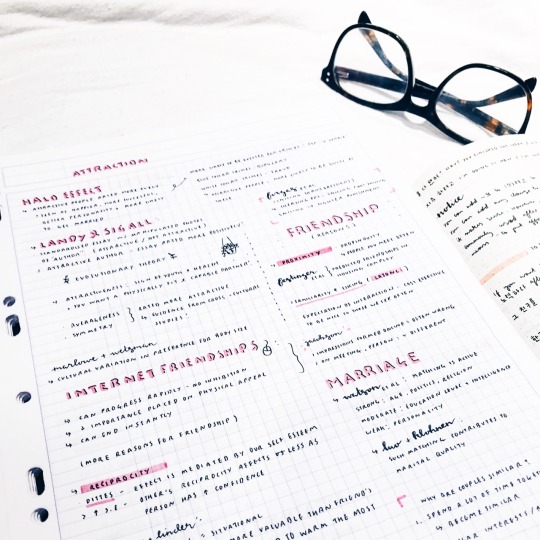
reviewing korean grammar and writing up lecture notes~ ig: studylustre
18K notes
·
View notes
Photo

“Diana”, a watercolor painting I’ve donated to http://drawthelinefund.com/ , a fundraiser for the ACLU.
The silent auction will be held tonight, at Gallery Nucleus. Come and mingle with us!
2K notes
·
View notes
Text
tag yourself student edition
who cares: reads books in class instead of listening, attention span of 5 seconds when studying, generally starts studying in the day before, lost all their new fancy pens by week 2, still somehow gets A*, sometimes starts arguing with the teacher
i can and i will: motivated af, watches legally blonde 24/7, big dreams and aspirations, bullet journal is goals, sometimes very forgetful but makes up for it through very hard work, wants to figure out everything by themselves before asking for help
hello my name is stressed: signed up for 10000 extracurriculars and can’t get out of them now, time management god, hates the glorification of all-nighters but stays up until 6 am anyway, has the highest expectations regarding themselves, needs a hug
aesthetics TM: desperately wants their notes to look perfect, spends all their money on stationery, loves to doodle, PUNS, is great in one specific class, always tries to help their friends with homework, study playlists!!!, can still easily feel overwhelmed and lost but they try and that’s enough
what: has lost their motivation somewhere along the way, has no idea what’s going on, “there was homework”, messy notes and messy life, really wants school to end, hates the education system, has no idea what they want to do after school tho
59K notes
·
View notes
Photo

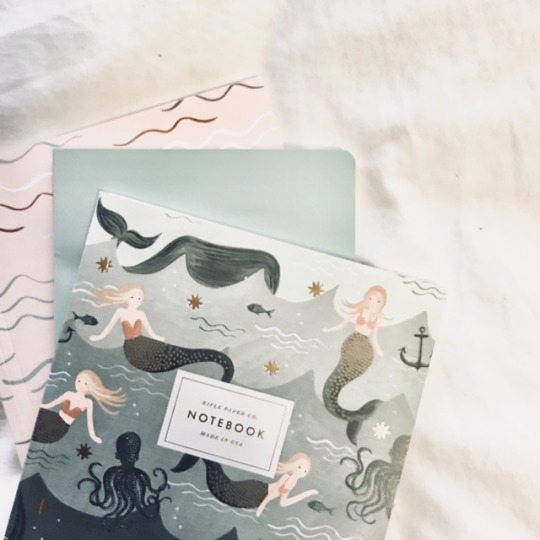
january 5th, 2018 // a bit in love with these gorgeous journals from rifle paper co ✨
18K notes
·
View notes
Photo


12.29.17
Wow this is probably the last post for this year!! I cant believe I started this studyblr this year…btw shout out my sister for the highlighters
2K notes
·
View notes

